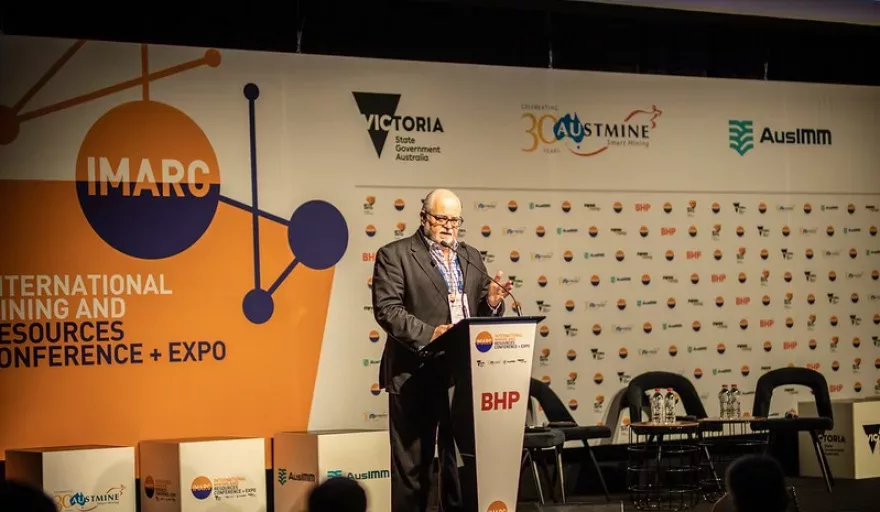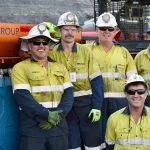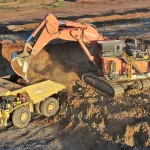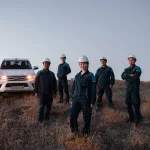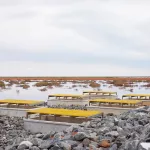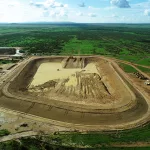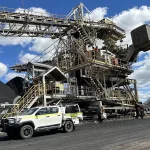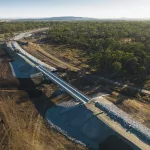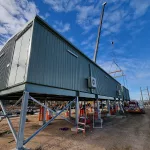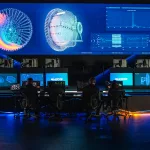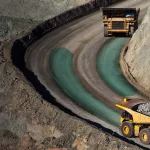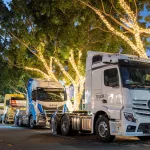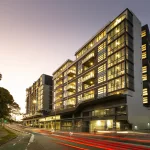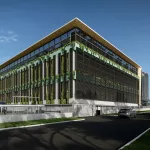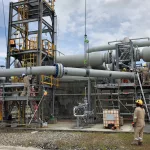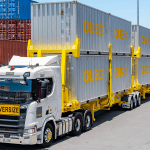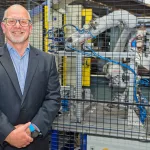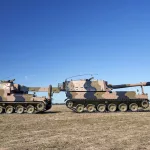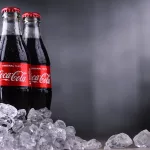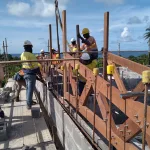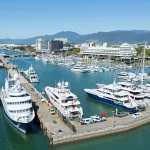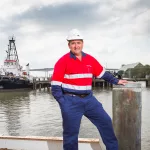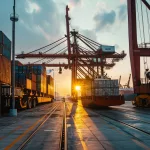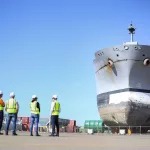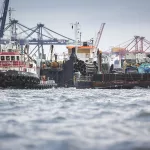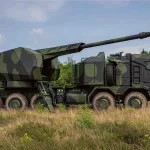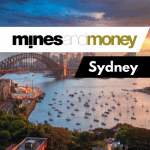The sixth annual edition of the International Mining And Resources Conference & Expo (IMARC), which took place October 31, 2019, reached new highs in the mining sector. Here, Anita Richards, Managing Director of IMARC, gives us the lowdown.
The mining industry is a key staple of the global economy.
From the technological innovations steaming out of Silicon Valley to China’s booming manufacturing industry, numerous markets worldwide are entirely reliant on the supply of commodities, minerals and metals found beneath the earth’s surface.
It’s big business, the world’s top 40 global mining companies having reported a combined revenue of $683 billion through the course of 2018. And Australia has long played a pivotal role.
Dating back to the gold rushes of the 1850s, the expansive country’s resource rich plains have consolidated mining’s position as one of the nation’s best-established sectors. Today it accounts for roughly seven percent of Australia’s $1.3 trillion-strong annual GDP – now considered to be a global top five producer of gold, iron ore, lead, zinc and nickel.
Such stature, and the presence of many global mining players that has come in tandem, makes Australia the perfect place for global mining conferences to blossom.
Indeed, this is exactly what the International Mining And Resources Conference & Expo (IMARC) has succeeded in doing, its sixth annual edition (concluded October 31, 2019) having reached new highs. Here, Anita Richards, Managing Director of IMARC, gives us the lowdown.
Q&A WITH ANITA RICHARDS, MANAGING DIRECTOR, IMARC
Now the dust has settled on 2019’s IMARC, tell us how the event went overall? Would you define it as a success?
Anita Richards (AR): IMARC 2019 was another successful event, bringing together thousands of people across the entire mining supply chain to discuss challenges and opportunities for the mining industry in the years ahead. Despite protests outside the venue, the conference itself was not disrupted and, inside, it was business as usual with more than 4,500 meetings taking place inside and many thoughtful and positive discussions on responsible and sustainable mining practices.
Attendees heard from 352 speakers across five theatres covering a range of subjects including mining and exploration opportunities, finding capital, plant and processing, global opportunities, mine optimisation, technology and workforce and culture.
2019 brought 359 mining companies to IMARC, a 10 percent increase year-on-year, who were vying for the attention of investors with a cumulative total of $4.12 trillion in assets under management and $29.28 billion ready to invest at IMARC.
What are some of the key statistics to take away from this year’s IMARC?
AR: The 2019 conference was the sixth annual IMARC conference, run in conjunction with the Victorian government. As Australia’s largest mining event, it attracted 6,639 delegates including participation from leading names in mining and technology such as Microsoft, IBM, Accenture, Sandvik, Caterpillar, BHP, FMG, Rio Tinto, Anglo American, Mitsui and more.
We featured 352 speakers and hosted 91 countries, including delegations from India, Chile, Saudi Arabia, China and Canada. The event attracted more than 100 journalists, with a strong international contingent from countries including Latin America, Canada, Indonesia, Russia, France and the US. More than 253 companies were on display across the 12,000-square-metre expo floor showcasing the latest mining projects, leading machinery, equipment, technology and innovations.
What were some of the key messages and themes discussed during IMARC?
AR: The focus for 2019 was on knowledge-sharing and exchanging ideas related to technology, sustainability, social licence to operate and job creation. Hundreds of discussions were held on responsible and sustainable mining practices. Speakers from major mining companies including Newcrest, Anglo American, FMG and BHP discussed the need for an engaged workforce with the right skills for a new decade, recognising the community and economic benefits of a social licence to operate, and the keys to ensuring productivity gains in a rapidly changing mining environment.
In the five concurrent conference theatres, other speakers detailed global opportunities in Africa, Mongolia, Canada, Latin America, and China; the dire need for more Australian engineering students in universities across the nation; digital transformation and the vital need to protect data; the value of diversity and inclusion; meeting the challenges of changing energy dynamics; and solving the problems of operating in remote locations.
The mining industry recognises that it is under ongoing and increasing scrutiny. Newcrest’s Chief Development Officer Michael Nossal, in his keynote address, told delegates they only had to “look at the conference programme or stop and talk to some of the people demonstrating outside to understand how the sustainability message is really affecting everything we do”.
“We have to walk into new communities, sit with new governments and set out how we operate and basically pass that test every time we look at moving into a new country,” he said. “But we actually have to deliver on these promises from the very beginning.”
The importance of dealing ethically and responsibly with communities and ensuring those values are shared by contractors were major themes that ran through many of the presentations.
Conferences such as IMARC give representatives of the entire mining supply chain the opportunity to come together in a collaborative way to discuss these challenges and to find solutions.
Did you feel a sense of optimism about Australia’s mining industry from the discussions and interactions?
AR: There is every reason to be optimistic about the Australian mining industry. State and federal government representatives explained the initiatives taken to assist and promote mining. A presentation by the Office of the Chief Scientist said that while current market conditions were challenging, hydrogen and gas were bright sparks and Australia was positioned to take advantage of growing demand for battery commodities. Manager of Resource Economic David Thurtell told us: “Potential growth is significant; for battery consumption alone demand could grow more than 20 percent a year for copper, nickel and lithium.”
The Victorian government used IMARC to announce the release of ground for gold exploration, the SA government said it had set long-range objectives for exploration investment, exports and competitive energy, and the WA government promoted the state’s strength not only in iron ore and LNG, but battery and critical minerals and its vast lithium deposits.
Miners large and small and the businesses that support them feel that the next decade will be one of transformational change in the sector. Importantly, they believe they are ready to answer the challenges.
Are you already looking ahead to next year’s edition?
AR: Planning is already underway for IMARC 2020 which will be bigger and better – contributing to the understanding and development of ideas that will make mining safer and more sustainable so that companies can continue to support the communities in which they operate. In fact, planning for next year started even as delegates, partners, sponsors and exhibitors reviewed this year’s outcomes on the final day of IMARC 2019.
How are you planning to make IMARC 2020 the best edition yet?
AR: Since inception IMARC has grown 245 percent. Our goal for 2020 is to continue this growth trajectory with more delegates, speakers, companies and exhibitors and continuing to hold our position as Australia’s largest mining event, and as a key pillar on the global mining event calendar.
Based on the success of this year’s newly launched features, 2020 will also see the return of the ASCENT startup and scaleup village, the core farm and a silent theatre, all of which will be back bigger and better.
IMARC’s reputation has been built on the quality of its presentations and in the collaborative way it tackles industry issues. No other single event brings together so many leading industry experts in one place – and the value of those connections is reflected in the billions of dollars of business that flows directly from the conference each year.
Early figures reported are showing that more than $361 million was invested, and a further $315 million of business has been generated or forecast to come in over the next 12 months as a result of attending IMARC 2019.
I look forward to continuing to receive reports of the value derived from this year’s conference, and we will continue working hard over the next 12 months to develop IMARC’s growing importance and reputation globally.

